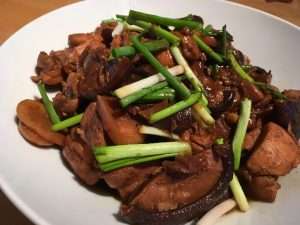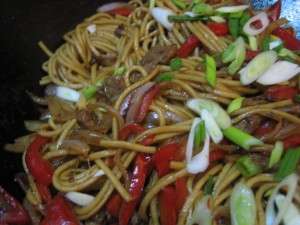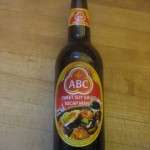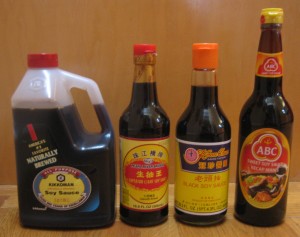 Dark, savory, and sweet describes this ginger-scented stew of chicken and mushrooms. It’s a Hakka classic with many variations. My mom braised big bone-in pieces of chicken and earthy shiitake mushrooms in soy sauce and sugar until dark and glossy.
Dark, savory, and sweet describes this ginger-scented stew of chicken and mushrooms. It’s a Hakka classic with many variations. My mom braised big bone-in pieces of chicken and earthy shiitake mushrooms in soy sauce and sugar until dark and glossy.
In this quick and easy version, Fah Liong, originally from Indonesia, uses a sweet soy sauce known as kecap manis and boneless chunks of chicken thigh (page 204 of The Hakka Cookbook for original recipe). Look for the Indonesian soy sauce in Southeast Asian sections of Asian supermarkets. For a quick alternative to kecap manis mix 2 tablespoons dark (aka black) soy sauce and 2 tablespoons packed brown sugar. Or make my recipe for Sweet Soy Sauce on page 269 of The Hakka Cookbook.
Soy-braised Chicken and Mushrooms
Makes 4 servings as a main dish or 6 to 8 servings as part of a multicourse meal
12 dried shiitake mushrooms
3 1/2 cups hot water, or as needed
1 1/2 pounds boneless, skinless chicken thighs
2 tablespoons vegetable oil
3 tablespoons thinly slivered fresh ginger
2 tablespoons minced garlic
3 tablespoons kecap manis (or 2 tablespoons each dark (or black) soy sauce and packed brown sugar)
1/2 teaspoon salt, or to taste
1/4 teaspoon ground white pepper
3 greens onions, including green tops, cut in 2-inch lengths
1. Rinse the mushrooms and soak in the hot water until soft, 20 minutes to 2 hours. Squeeze excess water out of mushrooms and reserve soaking water. Remove and discard mushroom stems. Cut caps in half.
2. Trim excess fat off chicken. Cut chicken into about 1-inch chunks.
3. Set a 14-inch wok or 5- to 6-quart pan over high heat. When the pan is hot, add the oil, ginger, and garlic. Stir-fry until garlic begins to brown. Add the chicken and stir often until it begins to brown 4 to 5 minutes. Add mushrooms and 1 1/2 cups of mushroom-soaking water, pouring carefully so sediment stays behind. Add sweet soy sauce and bring to boil.
4. Reduce heat, cover and simmer, stirring occasionally, until chicken is tender when pierced, 15 to 20 minutes. Transfer meat and mushrooms with a slotted spoon to a serving bowl. Skim off and discard fat from pan juices. If pan juices measure more than 1 1/4 cups, boil, uncovered, until reduced to that amount. If juices measure less than 1 1/4 cups, add water to make that amount and bring to a boil. Stir in salt to taste, pepper, and green onions. Pour over chicken.



